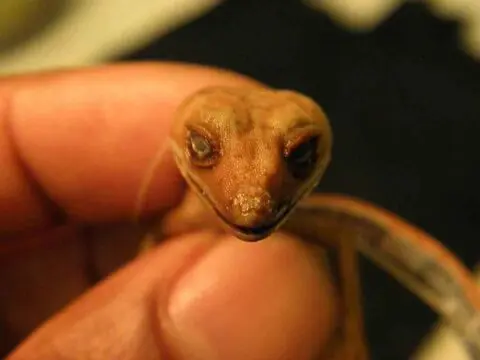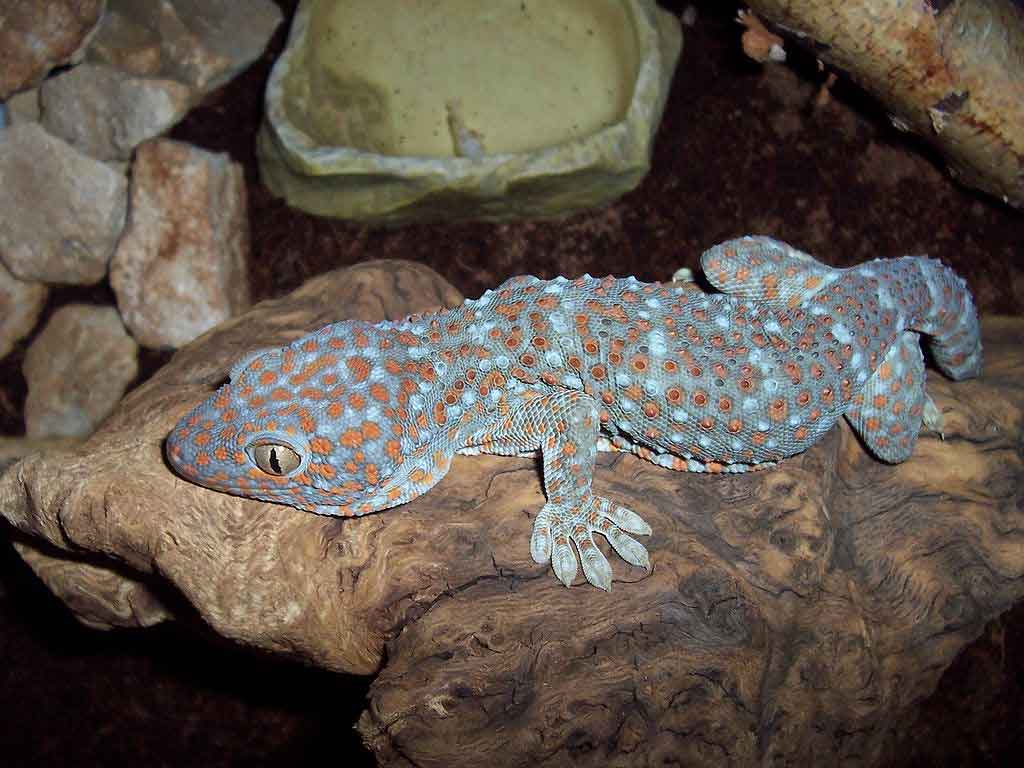
Content |
|---|
Geckos – a brief profile
The Geckos are, without a doubt, fascinating animals. Although they are becoming more popular as pets, the Geckos they continue to enjoy a kind of exotic status. The following brief profile aims to introduce a little to these interesting reptiles.
Origin
The Geckos have an impressive adaptability. That is why there is no region of the world in which they are exclusively located.. The Geckos can be found both in temperate climate regions such as in the desert or in the tropics.
Social behaviour
In the wild, most species of Geckos live in loose associations. But, some species are also strictly solitary, and males and females only come together to mate. In pet ownership, the Geckos they are usually kept in groups of two or more per terrarium.
But, if you keep several Geckos in different terrariums, you will be able to observe very well the communication between the animals. If there are others Geckos in the same territory, greeting each other, will threaten or make courtship sounds.
Geckos for maintenance in captivity
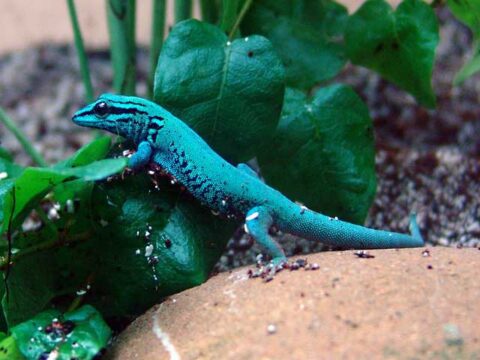
Electric blue gecko
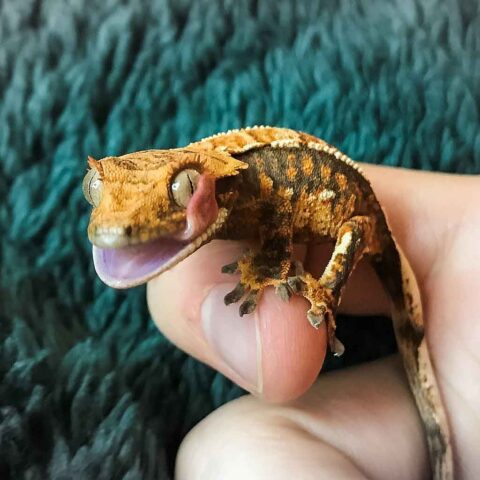
Crested gecko
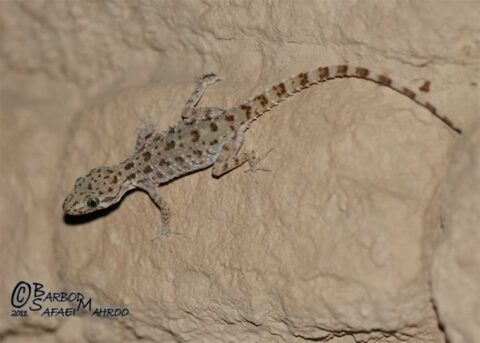
Rough-tailed gecko
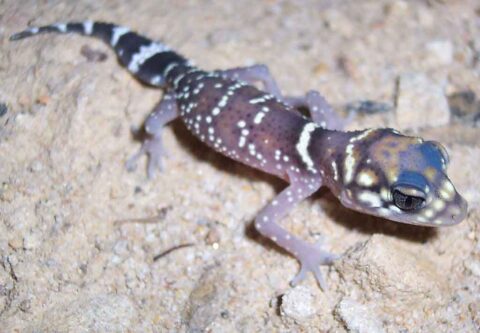
Thick-tailed gecko
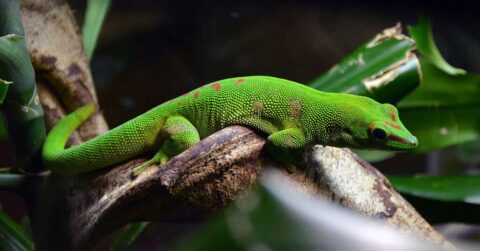
Madagascar day gecko
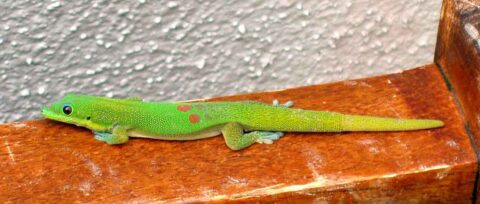
Gold dust day gecko
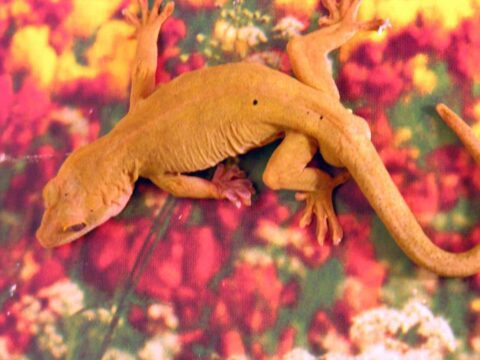
Golden gecko
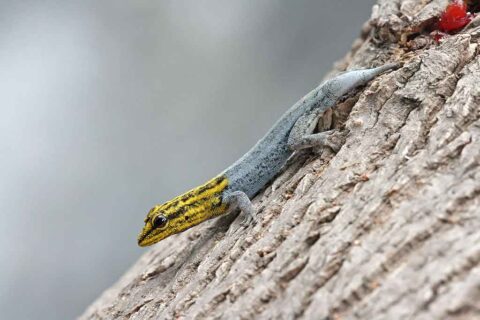
Dwarf yellow-headed gecko

Cameroon dwarf gecko
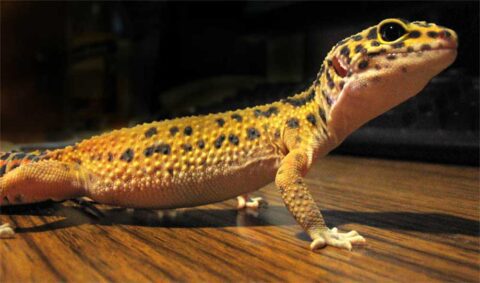
Leopard gecko
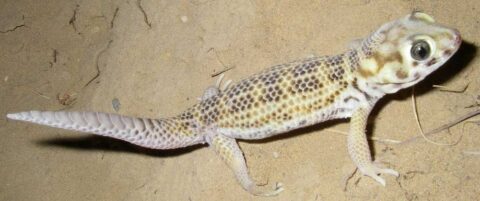
Common wonder gecko
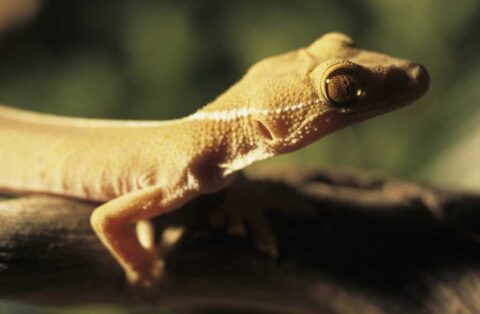
Lined gecko

Marbled gecko
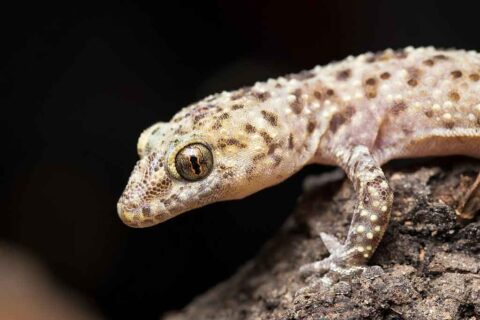
Mediterranean house gecko
Characteristics
As there are different species of Gecko, the physique of animals is sometimes very different. In total, the respective species reach a length of about 4 to 60 cm.. But, the species of Geckos smaller ones are especially suitable for keeping as pets, as they require less space.
A special feature of the Geckos are its legs, since many species have adhesive sheets with which they can cling to very smooth objects or walk and climb them. Other species, However, have intermediate skins on their fingers and can walk on sand.
Life expectancy
As a rule, the Geckos they live between 8 and 15 years, but there are exceptions. The Leopard gecko, for example, can live 25 years. In principle, you can already tell by the size of the species of Gecko whether the animal can reach a longer life. The smaller a Gecko, the lower your life expectancy will be.
If the Geckos are kept as pets, their life expectancy depends mainly on the conditions in which they are maintained. Keep the Geckos in conditions that are not appropriate for the species usually causes premature death.
Sexual maturity
Sexual maturity in Geckos usually begins at 12-18 months, although there may be differences from one species to another. If the Geckos find abundance of food, females may reach sexual maturity before their physical development is complete. This fact can have fatal consequences for the Gecko.
Gestation period
As for the gestation period, also varies from species to species. In general, However, it can be said that the Geckos have a gestation period of about 45 to 60 days. Depending on the ambient temperature, can pass up to 80 days until hatching. But, in ideal conditions, it only takes a few 50 days.
Food
To maintain the health of the Geckos, depend on a varied and nutritious diet. Between the Geckos there are carnivores, herbivores, omnivores and scavengers. So, the diet can include both insects and snails, green foods and even smaller mammals.
Minimum space required
Before deciding on the terrarium size, you should know what kind of Gecko is and how many animals you want to have together. Basically, the necessary space depends on the body size of adult animals.
So, the species of Geckos smaller require less space than larger ones. If two are maintained Geckos in a terrarium, it is assumed that a minimum space of about 100 cm x 75 cm x 50 cm.. With each additional animal, the need for space increases a 50% more.
Frequently Asked Questions about Geckos
There are questions about the Geckos that are often done. We would like to answer some of them here.
Because the Geckos they can stick to smooth surfaces and thus climb walls?
The secret of the climbing ability of many species of Geckos resides on its special legs. The Geckos have millions of fine hairs on the soles of their feet. These hairs are so fine that even a human hair is hundreds of times thicker.. With the help of these hairs, unique in nature, the Gecko find a foothold even on the smoothest surfaces. This is because a weak electrostatic force acts at the molecular level between each of the tiny hairs and the surface.. For a single hair, this attraction is almost insignificant, but the large number of combined hairs ensures that the Geckos can adhere to almost anywhere.
How do geckos communicate?? do they make sounds?
In fact, most species of Geckos they also communicate with each other using their own vocal language. So that, there are typical calls that can be used to clearly identify certain species of geckos (for example, the Tokay gecko (Gekko gecko)). The frequency and volume of the calls differ according to the species. And even within the same species there are individual differences from one animal to another..
Questions before buying a Gecko
Before buying Geckos, there are some basic questions you should ask yourself. It's important to know what you're getting into, because once you have them at home, you have to be prepared to take care of them for several years. During this time, not only will the costs of keeping the animals occur. Of course, the owner also has to invest a lot of work and time in maintaining the Geckos in a way appropriate to the species.
If you are not familiar with the Geckos as pets, first you should thoroughly inform yourself about the requirements for keeping these reptiles before buying them. Once the purchase decision has been made, the question of where you can buy geckos.
But before you do it, you should check if the Geckos are the right pet for you. And if it is suitable for keeping geckos at all. To avoid impulse purchases, you should take a little time and answer the following questions honestly:
- I know what breeding is like Geckos appropriate to the species?
- Work only starts with purchase. Am I willing to sacrifice time, money and space for animals?
- The costs of breeding Geckos are easily underestimated due to their small size. can i afford to buy a Gecko?
- The Geckos they can also get sick. Am I willing to pay for any veterinary treatment and medication and can I?
- One terrarium needs space and special weather conditions. Do I have a suitable room to accommodate the animals?
- The Geckos they are not stuffed animals. the characteristics of the Geckos fit my ideas about a pet?
- The Geckos eat live animals. Am I prepared to buy and feed them myself?, and even to raise them?
What are the purchase and maintenance costs that I have to reckon with??
As already mentioned, many people underestimate the costs of maintaining Geckos of appropriate shape to the species due to its small size. But, the costs of keeping pets do not necessarily depend on their size, but of the demands they pose for their maintenance.
Basically, it can be said that pets more “exotic”, including reptiles such as Geckos, tend to be more expensive to maintain. This is due to the fact that these exotic animals live in nature in completely different climatic conditions than those that prevail here.. The “simulation” of the natural habitat is correspondingly more complex and, Therefore, also more expensive.
Basically, you can distinguish between one-off costs (or rare) and regular to maintain the Geckos.
One-off costs
- Acquisition costs of animals
- Terrarium
- Furnish
- Illumination
- Heating systems or thermal carpets
- Humidifiers or irrigation systems
- Thermometer
- Hygrometer
Ordinary costs
- Food
- Minerals
- Detergent
- Soils
- Illuminators
- Electricity for heating and lighting
One-time or infrequent costs amount to approximately several hundred euros, because terrariums and the necessary technology are usually not exactly cheap. It also, there are the costs of buying the animals, in which you have to have some 30 to 100 euros per Gecko.
The usual costs of raising Geckos are somewhat minor, although they should not be underestimated. Food and electricity also cost money. And finally, but not less important, do not forget the veterinary expenses. Regular costs should be at least 20 to 50 euros per animal per month.
Are geckos suitable for children?
And again, parents make the mistake of buying their children a Gecko as a pet. They think that a Gecko it's something completely different and that your child will have a pet “special”. But not even the Gecko nor will the child enjoy this decision, because geckos are definitely not pets for children.
Like the Geckos require a lot of attention, knowledge and care, children would quickly be overwhelmed by them. It also, you must be able to ensure that you are aware of the requirements of the Gecko. And the Geckos they are not stuffed animals, although this claim is often used as a sales strategy in the pet trade.
Of course, there is nothing wrong with buying a Gecko and let the children have a part of the new cohabitant. But, children should not be left to take care of the Gecko solos.
Buy a gecko
The Geckos can be purchased in pet stores, to breeders or at reptile fairs. But, the best and safest option is to buy directly from the breeder. The breeder can often give you advice on breeding Geckos or offer help with any questions or problems. You can also ask the breeder to show you where the Geckos and thus decide for yourself whether the breeder is trustworthy and experienced in breeding Geckos.
At the time of buying Geckos, you must first observe the behavior of animals. Only if the Gecko seems to be healthy and alert you should take it home. In the breeder, you can usually take your time to look and then decide which gecko you like best.. You can also make an appointment with the breeder beforehand and see how the animal is fed..
Unfortunately, there are always black sheep among breeders who only take into account the economic aspect and do not care about animals. It is better to avoid this type of breeders, because each purchase guarantees the continuity of the system.
At the time of buying, pay special attention to whether the terrariums are clean, if the Geckos behave fearfully, if they have enough space and fresh water, and what is the feeding of the Geckos. As you already know what a gecko needs, now it's easy to find out if geckos go well where you want to buy them.
Once you have decided on a Gecko, notice the following:
- light eyes
- No wounds or scars
- No deformities in the toes
- Age and size
- Properly fed
Acclimatization period after purchase
After taking the Gecko at home, you need time to get used to your new environment. It is important that you place the animal in the terrarium ready for use immediately after transport and then only observe or talk to you.. In no case should it be removed Gecko to play the first day. New animals must first settle in their unfamiliar environment and this is already stressful enough for the Geckos. If you start too early with pressure or even coercion, there is a risk that animals will react with fear and shyness.
So that the Gecko feel comfortable, the terrarium must be arranged appropriately to the species. If he Gecko has enough hiding places, will be installed faster. after a few days, you should try to attract the Gecko with food and, when sufficiently domesticated, you can try to get it out. If you're lucky, the Gecko it will come to your hand later on its own, but it's also possible that he's still shy. Both must be accepted, because in the end each animal is its own individual.
Alternative names:
1. Gekkota, gekko (English).
2. Gekkonidae (French).
3. Gekkonidae (German).
4. lagartixas, taruíras, osgas, gecos, catongas, bribas, bibas, sardaniscas ou sardanitas (Portuguese).
5. Gecko, Gekko, Geco, Geko, Salamanquina, Salamanquesa (español).
